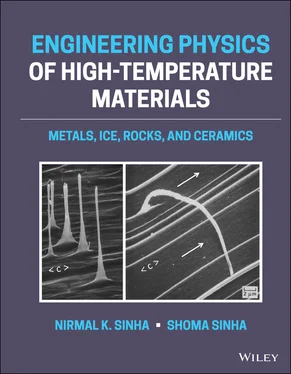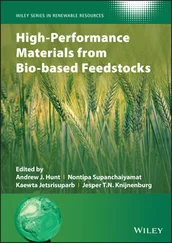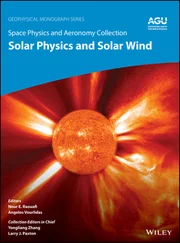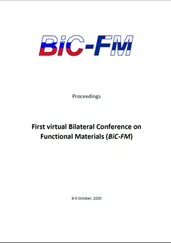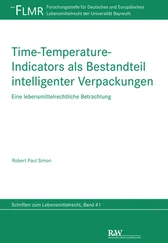Nirmal K. Sinha - Engineering Physics of High-Temperature Materials
Здесь есть возможность читать онлайн «Nirmal K. Sinha - Engineering Physics of High-Temperature Materials» — ознакомительный отрывок электронной книги совершенно бесплатно, а после прочтения отрывка купить полную версию. В некоторых случаях можно слушать аудио, скачать через торрент в формате fb2 и присутствует краткое содержание. Жанр: unrecognised, на английском языке. Описание произведения, (предисловие) а так же отзывы посетителей доступны на портале библиотеки ЛибКат.
- Название:Engineering Physics of High-Temperature Materials
- Автор:
- Жанр:
- Год:неизвестен
- ISBN:нет данных
- Рейтинг книги:3 / 5. Голосов: 1
-
Избранное:Добавить в избранное
- Отзывы:
-
Ваша оценка:
- 60
- 1
- 2
- 3
- 4
- 5
Engineering Physics of High-Temperature Materials: краткое содержание, описание и аннотация
Предлагаем к чтению аннотацию, описание, краткое содержание или предисловие (зависит от того, что написал сам автор книги «Engineering Physics of High-Temperature Materials»). Если вы не нашли необходимую информацию о книге — напишите в комментариях, мы постараемся отыскать её.
Discover a comprehensive exploration of high temperature materials written by leading materials scientists Engineering Physics of High-Temperature Materials: Metals, Ice, Rocks, and Ceramics
Engineering Physics of High-Temperature Materials (EPHTM)
Engineering Physics of High-Temperature Materials
Engineering Physics of High-Temperature Materials: Metals, Ice, Rocks, and Ceramics
Engineering Physics of High-Temperature Materials — читать онлайн ознакомительный отрывок
Ниже представлен текст книги, разбитый по страницам. Система сохранения места последней прочитанной страницы, позволяет с удобством читать онлайн бесплатно книгу «Engineering Physics of High-Temperature Materials», без необходимости каждый раз заново искать на чём Вы остановились. Поставьте закладку, и сможете в любой момент перейти на страницу, на которой закончили чтение.
Интервал:
Закладка:
The above phenomenological categorization of creep‐rupture characteristics is known to apply for levels of stresses relevant to engineering structures or components. For such operational conditions, contributions due to elasticity and delayed elasticity (or anelasticity) are assumed to be negligible and thus considered unimportant. This presumption of the role of delayed elastic effect as negligible for mechanical response relevant to practical engineering applications is not correct. This topic will be dealt with in various chapters in this book, and particularly, while presenting strain‐rate dependence of yield (0.02% strain) strength, stress relaxation, and nucleation kinetics of grain‐boundary cracks at elevated temperatures.
The inelastic or the creep component of deformation has been “recognized” to be primarily controlled by the mobility of intracrystalline (or intragranular) lattice defects, called dislocations. This regime is called “dislocation creep.” An introduction to dislocations in crystals is given by Weertman and Weertman (1964), Nabarro (1967, 1987), and Hull and Bacon (1984), to name a few books. Significant progress has been made in mapping the regime of dislocation creep on the basis of experimental observations on the stress–temperature–grain size dependence of the secondary or actually minimum creep rate (Ashby 1972; Frost and Ashby 1982). While this was convenient for a working‐model kind of description, minimum creep rates, as pointed out by Evans and Wilshire (1985) and shown in Chapter 8, represent evolved characteristics, not fundamental properties of polycrystalline materials. The deformation maps also describe the conditions for diffusional creep, which is extremely important for the processing industry. Burton (1977) has given a brief, but comprehensive, introduction to diffusion creep of polycrystalline materials.
For metallic alloys, it is customary to use significantly high temperatures for processing during which high‐level strains are involved. Diffusion processes within the grains and along the grain boundaries are activated vigorously during this type of deformation. Three types of diffusion creep have been identified for polycrystalline materials. They are known as Nabarro (1948)–Herring (1950), Coble (1963), and Ashby–Verrall (1973) diffusional creep (presented in detail in Chapter 5). Ashby–Verrall (A–V) described a model that differs fundamentally from Nabarro–Herring (N–V) creep and Coble creep in a topological sense. They called their model as, “diffusion‐accommodated flow.” According to the A–V model, grains switch with their neighbors and do not elongate significantly. At large strains, A–V flow proceeds faster than N–H creep or Coble creep. Such high‐strain flow conditions are popularly known as “superplastic.” This is certainly a misnomer and often misleading because classical theories of plasticity do not recognize rate effects and hence “time” as a parameter. To avoid contradiction, is it appropriate to described this as “superviscous”? For this same reason, the term “plastic” will not be used in this book, except for as a reminder or cue. We will use “viscous flow” in a general sense for describing permanent or nonreversible flow, irrespective of its dependence on stress. Thereby, the terms viscoelastic response and viscous flow will be applied universally. It should also be emphasized that “viscous strain rate,” used frequently in this book, is not a synonym for a minimum or steady‐state flow rate.
1.7 Strength of Materials
The concept of “strength” implies a specific material property. Methods have been developed to quantify tensile, compressive, bending, shear, etc. strength and standard procedures have been developed for conducting appropriate tests (see Chapter 4). At ordinary temperatures, strength is taken for granted to be independent of the rate of loading. However, the rate effects are recognized, especially for materials with pores and microcracks, and standard tests are recommended to perform in a specific range of loading rate. Stress–strain ( σ – ε ) diagrams are used to characterize the yield and ultimate strengths. These diagrams have no room for time. Traditionally, the initial linear part of σ – ε curves implies elastic regime, and deviation from the linearity is considered as plastic flow. At elevated temperatures, the linear σ – ε response does not necessarily mean pure elastic response. Material strength, defined by yield, is thus a low‐temperature concept. This low‐temperature concept does not apply at the elevated temperatures relevant to many engineering applications. Nonetheless, the concept prevailed and was extended to elevated temperatures. It has retarded growth in the understanding of failure processes involving inelastic deformation or creep and hence microstructure–property relationship in engineering components subjected to high temperatures. Application of this concept has misleading implications, drawing away from one basic fact: Transient or primary creep stage, involving the initial periods of damage accumulation, plays a dominant and perhaps decisive role in many engineering design problems. At high temperatures, strength, creep, and relaxation properties are intertwined and require a holistic approach to understand the complexities of engineering properties at high temperatures.
There are a number of excellent reviews and innumerable books and monograms on strength of materials, including response at high temperatures on physics and mechanics of creep and strength of metals and alloys. The situation has improved significantly over the last century in extending this knowledge to other materials, such as rocks and ceramics. Investigators in the field of mechanics of nonmetallic materials looked toward the knowledge gained and concepts developed in metallic materials. Theories on diffusion and dislocation creep in metals, concentrated on explaining the steady‐state flow, dominated the minds of innumerable experimentalists irrespective of materials. The main reason, of course, includes the technical difficulties in performing experiments at high temperatures together with in situ measurements and in‐depth microstructural analysis at experimental temperatures. While presenting a damage mechanics treatment of creep failure in rock salt, Chan et al. (1997) remarked that it is not difficult to give a rational explanation for the deficiency, but the fact admits of no doubt of experimental difficulties and limitations, but also challenging traditional approaches. The transient creep, although recognized, is given only a passing importance and practically no importance is given to the delayed elastic phenomenon even though delayed elastic strain can be measured and analyzed. The contribution of transient creep, particularly the recoverable part, is assumed to be negligible without any serious challenge to this belief. Fortunately, the situation has improved considerably over the last 40 years in engineering physics of ice, a material that naturally exists at extremely high homologous temperatures. In situ measurements can be made and microstructural investigations can be made at experimental temperatures. Engineering physics of ice emphasized the importance of micromechanics of transient creep and its role in developing grain‐boundary microvoids, kinetics of void formation, void‐enhanced creep, etc. The transparency of pure polycrystalline ice and relatively large grain sizes has also been proved to be most important, in fact unique, in making in situ observations on grain‐facet‐sized void formation.
There was a need to overhaul the basic experimental techniques. Classical use of the dead‐load creep test procedures, ideal for long‐term tests, was complemented with the introduction of closed‐loop‐controlled constant‐stress “strain relaxation and recovery tests” (SRRTs) for short‐term tests ( Chapter 4). Dead‐load systems cannot provide the necessary data for the initial and early part of creep curves, necessary for the interpretation of engineering (say 0.2% offset) yield strengths or low‐cycle fatigue or dwell‐fatigue properties. SRRTs can generate a significant amount of data on reversible elastic and delayed elastic strain and the irreversible (permanent) viscous strain components in a short time using only one specimen, if necessary, to avoid specimen‐to‐specimen microstructural variations and thus keep the structure fixed. Three basic components of strain (elastic, delayed elastic, and viscous) during primary creep over a wide range of stresses and temperatures can be examined. SRRT is more powerful than any mechanical tests popular today for investigating “constant stress” and “constant microstructure” creep properties at high temperatures.
Читать дальшеИнтервал:
Закладка:
Похожие книги на «Engineering Physics of High-Temperature Materials»
Представляем Вашему вниманию похожие книги на «Engineering Physics of High-Temperature Materials» списком для выбора. Мы отобрали схожую по названию и смыслу литературу в надежде предоставить читателям больше вариантов отыскать новые, интересные, ещё непрочитанные произведения.
Обсуждение, отзывы о книге «Engineering Physics of High-Temperature Materials» и просто собственные мнения читателей. Оставьте ваши комментарии, напишите, что Вы думаете о произведении, его смысле или главных героях. Укажите что конкретно понравилось, а что нет, и почему Вы так считаете.
